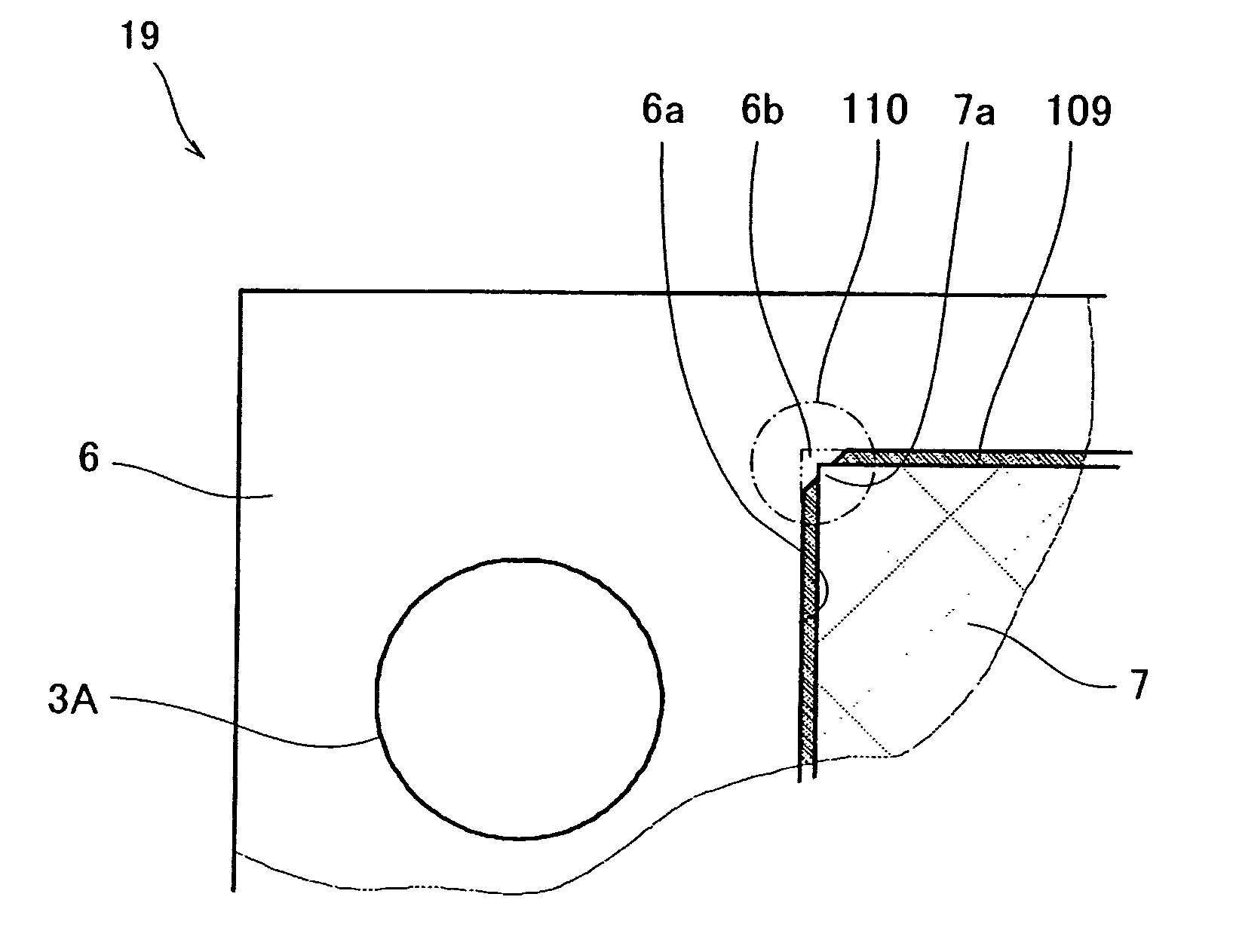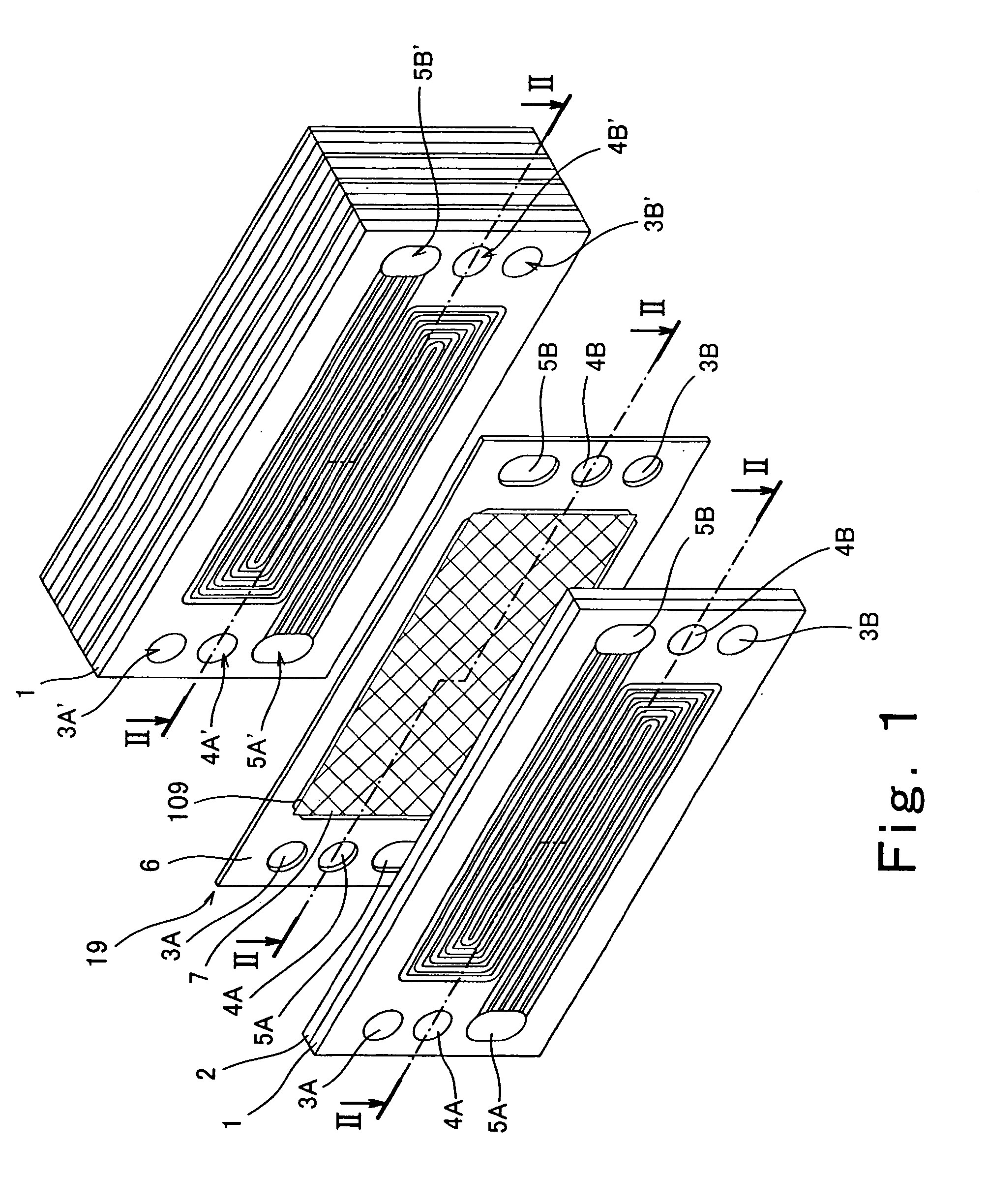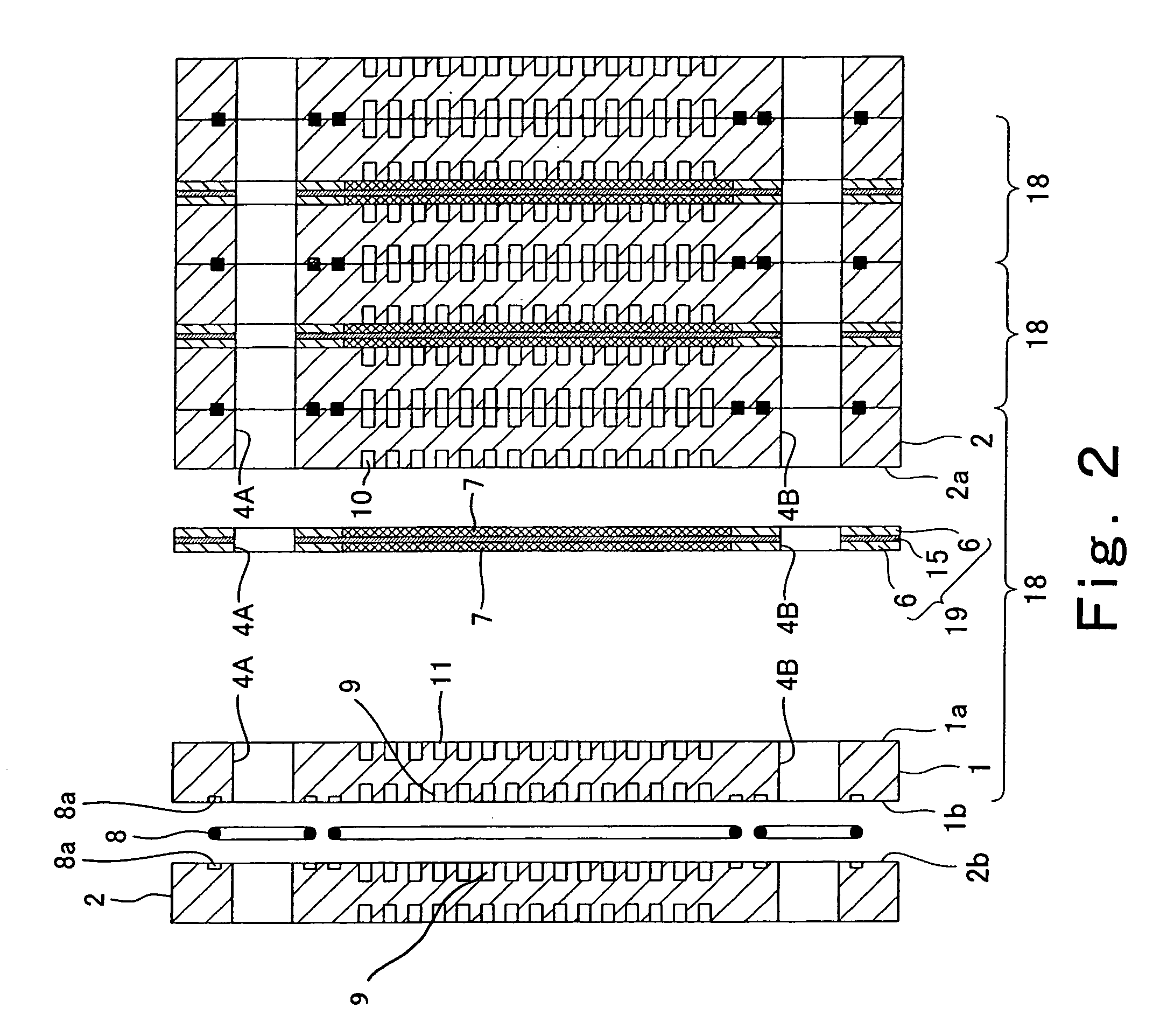Polymer electrolyte fuel cell
- Summary
- Abstract
- Description
- Claims
- Application Information
AI Technical Summary
Benefits of technology
Problems solved by technology
Method used
Image
Examples
embodiment 1
[0048]FIG. 1 is a exploded perspective view showing the structure of a polymer electrolyte fuel cell according to a first embodiment of the present invention. In FIG. 1, a stack structure of the polymer electrolyte fuel cell is partially exploded for the sake of convenience. FIG. 2 is a cross-sectional view taken along line II-II in FIG. 1. As in the structure of FIG. 1, a stack structure of the polymer electrolyte fuel cell is exploded for the sake of convenience.
[0049] Referring now to FIGS. 1 and 2, the polymer electrolyte fuel cell is formed by stacked cells 18 (unit cells: see FIG. 2).
[0050] As shown in FIG. 2, the cell 18 is structured such that an MEA (membrane electrode assembly)-gasket assembly 19 is sandwiched between a cathode-side electrically conductive separator (hereinafter referred to as a cathode separator) 1 and an anode-side electrically conductive separator (hereinafter referred to as an anode separator) 2.
[0051] As shown in FIG. 1, a pair of a fuel gas supply...
example 1
[0064] In this example according to Embodiment 1 the MEA-gasket assembly 19 in FIGS. 5 and 6 was manufactured by the following process.
[0065] First, platinum was carried in a weight ration of 1:1 on KETJEN® BLACK EC (furnace black produced by Ketjen Black International Co., Ltd) with a specific surface area of 800 m2 / g and a DBP oil absorbing amount of 360 ml / 100 g. Then, 35 g of water and 59 g of a liquid alcohol dispersion of hydrogen ion conductive polymer electrolyte (9% FSS produced by Asahi Garasu Co. Ltd) were mixed with 10 g of catalyst powder, and were dispersed by ultrasonic agitator, thereby producing a catalyst layer ink. The catalyst layer ink was applied to polypropylene film (TREFAN® 50-2500 produced by Toray Co. Ltd) and dried, thereby forming the catalyst layers 13 and 14. The catalyst layers 13 and 14 were cut into pieces of 104×216 mm, which were transferred to center portions of surfaces on both sides of the polymer electrolyte membrane 12 of 330×150 mm (50 μm t...
embodiment 2
[0073]FIG. 9 is a plan view showing the structure of an MEA-gasket assembly 19 of a polymer electrolyte fuel cell according to a second embodiment of the present invention. FIG. 10A is an enlarged plan view showing the structure of the portion represented by X in FIG. 9. In FIGS. 9 and 10A, the same reference numerals as those in FIGS. 5 and 6 denote the same or corresponding parts.
[0074] Referring to FIGS. 9 and 10A, the MEA-gasket assembly 19 of the second embodiment is substantially identical to that of the MEA-gasket assembly 19 of the first embodiment except for the structure of the gap 109 between the gasket 6 and the gas diffusion electrode 7.
[0075] As shown in FIGS. 9 and 10A, in the MEA-gasket assembly 19, the gap 109 between the gasket 6 and the gas diffusion electrode 7 is formed in the shape of rectangular wave (6 mm pitch×50 turn). More specifically, the outer periphery of the gas diffusion electrode 7 is formed in convex and concave shapes composed of a continuous se...
PUM
 Login to View More
Login to View More Abstract
Description
Claims
Application Information
 Login to View More
Login to View More - R&D
- Intellectual Property
- Life Sciences
- Materials
- Tech Scout
- Unparalleled Data Quality
- Higher Quality Content
- 60% Fewer Hallucinations
Browse by: Latest US Patents, China's latest patents, Technical Efficacy Thesaurus, Application Domain, Technology Topic, Popular Technical Reports.
© 2025 PatSnap. All rights reserved.Legal|Privacy policy|Modern Slavery Act Transparency Statement|Sitemap|About US| Contact US: help@patsnap.com



